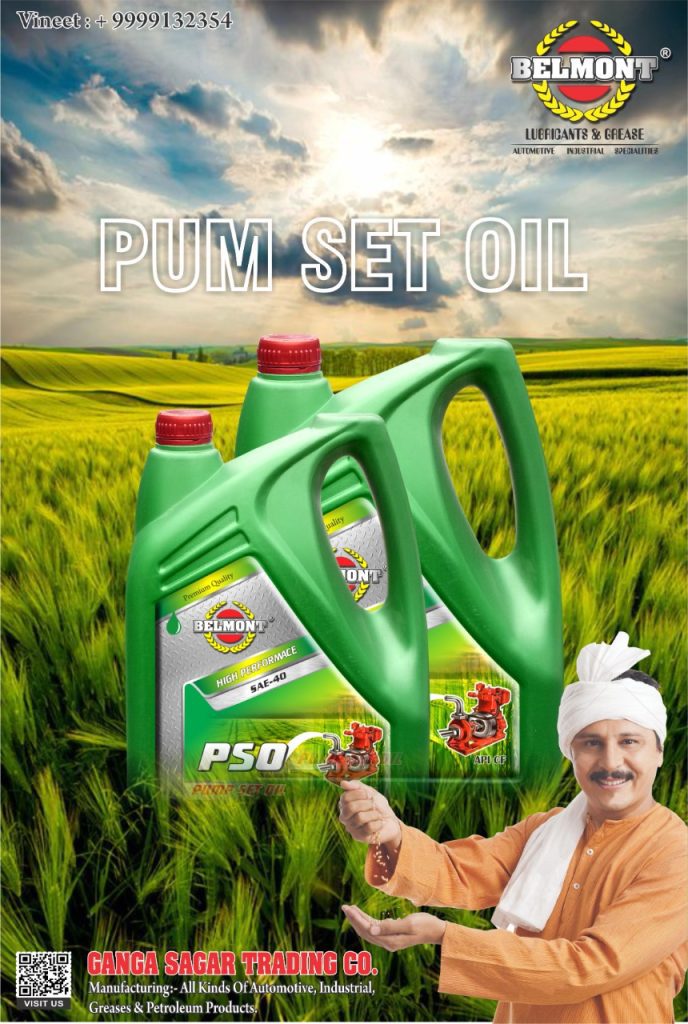
Meta Title:
What Happens If You Use the Wrong Oil in a Pump Set?
Using the wrong oil in a pump set may seem like a small mistake, but it can lead to serious damage to the engine, reduce performance, and even result in costly repairs. Pump sets used in agricultural and rural environments depend significantly on the correct grade and quality of oil to ensure smooth, reliable, and long-lasting performance. This blog explains the risks of using the wrong oil and how to make the right choice to ensure long engine life and reliability.
Why It’s Important to Use the Right Oil in a Pump Set
Pump sets are typically operated in demanding outdoor conditions—especially for irrigation or powering machinery in rural and industrial areas. Understanding what happens if you use the wrong oil in a pump set is crucial, as the right lubricant plays a vital role in maintaining engine health, ensuring proper lubrication, and enhancing overall performance.
- Lubricating engine components
- Reducing friction and heat
- Preventing sludge and deposits
- Enhancing fuel efficiency
- Extending the life of the engine
Consequences of Using the Wrong Oil
Using oil that doesn’t match the engine specifications or environmental conditions can have multiple negative effects:
1. Engine Overheating
The wrong oil may not provide adequate lubrication, leading to excess heat and potential engine seizure.
2. Reduced Lubrication
If the oil is too thin or too thick, it may fail to form a protective layer between moving parts, causing wear and tear.
3. Sludge and Deposits
Incorrect oil can break down quickly, forming sludge and carbon deposits that clog engine components.
4. Corrosion
Using low-quality or incompatible oil may lead to moisture retention inside the engine, causing rust and corrosion.
5. Decreased Performance
The engine may run noisily, start consuming more fuel, and produce black smoke, indicating incomplete combustion.
6. Shortened Engine Life
Continuous use of the wrong oil gradually damages internal parts, reducing the overall lifespan of the pump set engine.
Signs You Might Be Using the Wrong Oil
- Frequent overheating
- Difficulty starting the engine
- Increased exhaust smoke
- Loss of engine power
- Oil turning dark too quickly
How to Choose the Right Oil for Your Pump Set
- Check Engine Manufacturer’s Recommendation
Always refer to the owner’s manual for the right oil grade, usually SAE 20W40 or 15W40 for pump sets. - Consider Climate and Usage Conditions
Rural and agricultural environments may require oils with higher thermal stability. - Choose High-Quality Brands
Low-cost or unbranded oils often lack the additives and protection needed for long-term engine health.
Recommended Pump Set Oils

At www.belmontlubricants.com, we specialize in high-performance lubricants for rural and industrial use. Our Belmont PSO Pump Set Oil is engineered to withstand high temperatures and heavy-duty usage, making it ideal for farming and irrigation applications.
You can explore more about our pump set oil range in the blogs below:
- Best PSO Pump Set Oil Manufacturers and Suppliers in Delhi, India
- Which Oil Increases the Life of a Pump Set Engine?
- Best 20W40 Oil for Pump Set in Rural Areas
Conclusion
Using the correct oil in your pump set is not just a maintenance tip—it’s a necessity. The wrong oil can cause long-term damage, poor performance, and reduce the lifespan of your equipment. Always invest in quality oil that matches your pump set’s requirements, especially when operating in demanding conditions.
Choose Belmont Lubricants for reliable, tested, and high-performance oils that protect your engine and deliver consistent output.
Frequently Asked Questions (FAQs)
Q1. Which oil is most suitable for diesel pump sets used in rural areas?
A: SAE 20W40 grade oil is commonly recommended for diesel pump sets in rural areas due to its heat resistance and load-handling capacity. Belmont’s 20W40 Pump Set Oil is a reliable choice.
Q2. Can I use car engine oil in a pump set?
A: No, car engine oils have a different formulation and do not handle the high temperatures and heavy load conditions that pump sets typically experience.
Q3. What is the recommended oil change interval for a pump set?
A: It is recommended to change the oil every 100–150 hours of operation or as specified by the engine manufacturer.
Q4. What happens if I use low-quality or expired oil?
A: Low-quality oil can cause poor lubrication, sludge buildup, overheating, and ultimately lead to engine failure.
Q5. How do I know if the oil is compatible with my pump set?
A: Always check the engine manual for the recommended viscosity and specifications, or consult with a lubricant expert from Belmont Lubricants.
